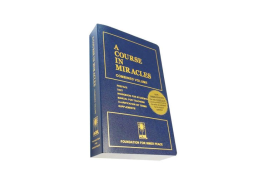I hear these confident words a lot from men who have read Mantak Chia’s Multiorgasmic Male. Alas, I fear I must share some unwelcome news.
I have long studied the seminal texts (pardon the pun) of various traditions that taught the careful cultivation of sexual energy for higher ends. I have also practised sex without orgasm for years.
Both a careful reading of the underlying texts and personal experience suggest that orgasm, not ejaculation, is where the road forks if one would truly benefit from this practise. This is because “semen loss” is not the issue.
The authentic texts concern themselves with the loss of “jing (ching)”, “chi”, “boddhicita”, “prana”, “ojas”, “ens seminis (seed essence)”, etc. These texts are referring to the dissipation of sexual energy, not to physical emission or spasmodic release. And this loss of vital energy affects all lovers who climax.
Thus if someone orgasms foregoes ejaculation, or ejaculates without semen (e.g., a female), one still loses the ability to redirect sexual energy for a higher end. That’s quite apart from any lingering distress as the brain gradually returns to neurochemical homeostasis after the Big “O”.
No word for “orgasm”
Keep in mind that until the 1680s there was no word for “orgasm” (as distinguished from ejaculation). Also, the rare texts addressing this esoteric sexual practise were written by men…for men. Imagine being an instructor and literally at a loss for words. It’s hardly surprising that some teachers emphasised the only visible and tangible event associated with orgasm: the loss of semen.
It was certainly easier than talking about the unquantifiable short-circuiting of the “love spasm”. Thus arose Chia-esque rationalisations about semen. Easier, more direct, more concrete, more measurable. This meant that, for centuries, many teachers, writers and enthusiasts of the practise have seemed fixated on conserving sperm rather than sidestepping climax.
Given that the Tantras appeared before the creation of the word for “orgasm”, it’s hardly surprising that some later students mistakenly concluded that only “ejaculation” was to be avoided, and orgasm itself without sperm-loss was perfectly fine. The delusion took root and lasted a long time. This explains the modern distortion of ancient texts.
Like many clouds, this one had a silver lining. A period of celibacy with sexual self-control is good preparation for partnered practise. A “semen retention” practise certainly reduces orgasms in trainees, unless they assume that ONLY the loss of semen is to be avoided and not the orgasm (because it is not mentioned specifically)
Liberation
A better goal than avoiding ejaculation is the goal of freeing ourselves from slavery to “desire” (the instinctive pursuit of physical gratification above other goals). In fact, virtually all Dharmic schools and Taoist texts advising careful cultivation of the sexual force assert that such freedom is “the way to heaven” (to use a Tao Te King expression).
The exercises and perspectives of these schools seek to free us from our unconscious attachment to pursuit of physical gratification. Never were they intended to perpetuate a state of slavery to it – with or without ejaculation.
It’s apparent that if there’s one desire that enslaves humans above all others, it’s pursuit of orgasm. The majority of humans find the idea of self-control in the face of climax bizarre. The creed that orgasm is “necessary” and “empowering” has more adherents than any religion. It’s also better defended and bolstered with more rationalisations than any religion.
Take a moment to reflect upon just how ubiquitous and dominant, even domineering, humanity’s defence of orgasm is. It holds for all sexes. In fact, today’s women seem to be among its most vociferous champions.
My goal in this post is to suggest that the “continent” sexual practices were ideally about increased human liberation from the grip of physical gratification, not just about mere fluid retention for power. That said, some texts (or their interpretations / translations) certainly did go in that direction
Do you know how to place yourself in a state of mindfulness? In a state of still, silent inner attention? Have you ever done this during a moment of strong desire? Have you noticed its effect on desire?
When we observe ourselves in this way we no longer identify with desire. We see it for what it is: a human drive with a strong grip. We comprehend humanity’s slavery to desire. And, in this moment, we’re free of it. The need or desire to yield to impulse grows weaker than the longing for freedom! This is why mindfulness furthers sacred sex practises.
Understanding pranayama and urdhvareta
Among the best-known exercises for cultivating the sexual force (in the schools that consider it important), we almost always find forms of pranayama and sometimes the mention of urdhvareta. We’re advised to visualise sexual energy flowing inwards and upwards. Towards the centre. Not outwards and downwards.
The word urdhvareta designates a person who has advanced in the human growth practises of the ancient Tantras, including yoga: urdhva: “inward and upward”, reta: “sexual substances”. So a person who has reversed the flow of his/her sexual force becomes an Urdhvareta. An urdhvareta’s energy flows from the usual centrifugal state where energy flows outwards (via orgasm) to a centripetal state, where energy flows upward in the direction of all pranayamas.
Obviously, the word reta in the term urdhvareta doesn’t mean that semen or menstrual fluids themselves are circulated upwards through non-existent physical channels. Reta is a metaphorical, allegorical term for sexual energy itself.
More on allegory
The Sanskrit language (from which the above terms originate) is an allegorical, metaphorical language. Sanskrit is often polysemous. That is, many words have several meanings. It’s called Sandha Bhasa, “twilight language”. In twilight, silhouettes can be interpreted several ways.
It’s an alchemical language. It speaks of physical elements but actually refers to internal processes. Incidentally, alchemy existed in India before its appearance in Europe.
The key to grasping deeper meanings lies in understanding concepts that teachers often transmitted orally and not in texts. This was the case with the delicate human challenge of conserving and reorienting the potent force of desire (Shakti).
Students were taught to apply in real life the virtues of moderation, contentment, self-control, reservation, detachment, discipline, temperance, integrity (without evasion) and so on. Especially with respect to desire. These were not just fancy words from another era.
A misplaced focus on seminal retention (as opposed to rechannelling orgasmic energy) has led to other doubtful practises. These include pressing the urethra beneath the fingers, and/or using vigorous contractions to ensure the seminal fluid doesn’t escape. Again, the flawed assumption is that this practise was entirely about managing liquid. Such practises can help to retain some vitality. Yet they seldom serve practitioners well.
If the supreme spiritual results promised by this practise were simply due to mechanical exercise of contracting the perineum (the famous mula bandha) or pinching the urethra, heaven (liberation, moksha, kundalini, etc.) would already be ours.
Mechanical interpretations have generated much enthusiasm over the years. Humans love it when something mechanical promises so much.
The relative ease of such practises has thus popularised them to the detriment of the more profound practises addressed earlier. The latter require much greater inner transformation and fundamental changes in perspective.
Preposterous interpretations
Keep these points in mind if you would interpret old texts correctly. Otherwise, you run the risk of straying from their true meaning.
Some academics and enthusiasts cling tightly to the most physical definition of words in their translations. This has carried them to some ridiculous destinations. Consider the claim that you can make a nectar that grants immortality (“amrita”) just by mixing a little semen, menstruate and alcohol in a cup and…chin, chin! Immortality!
Sorry, but no. The Sanskrit word for “cup” also means (and much more accurately here) “skull” (for the destination of the sexual energies at the top of the head). And the word for alcohol also refers (and much more so here) to the euphoric state of a spiritual connection to the Self (Shiva). The term “reta”, which can be defined as reproductive substances, also alludes to non-physical essences of male and female.
It’s encouraging, and a bit ironic, that the fundamental misunderstanding that ancient texts were promoting “multiorgasmic men” has helped to popularise sacred sex. But there are really only two, mutually exclusive, possibilities: sex with orgasm and sex without it. At present the battle between the clans rages on. Adherents of the Religion of the Orgasm view the authentic teachings as heresy.
Neotantra nursery
All too often new-age and neo-tantra teachers also help to mislead the public. They “deify” orgasm and promise kundalini awakenings and better and more climaxes. Yet tantra scholar Georg Feuerstein has stated clearly that, “Orgasm is not part of the tantric repertoire”. “Orgasm does not lead to happiness, only to pleasant sensations. The serious practitioner must bypass orgasm”.
Yet, it’s also true that lovers who seek to experience the advanced practises of sacred sex want to be sure that they have first mastered orgasmic sex. How many people have I seen in my 40 years of teaching who cause themselves torment and have troubled sex lives because they skipped steps?
Before you “ride the dragon” of advanced practises (without orgasm) regulate your basic sexual function and change your outlook. Only then can you learn to play with riding desire well without being trampled by it. Here, neo-tantra can serve as a playground as long as it is recognised for what it is: a non-tantric, starting point.
Ancient and not so ancient traditions
Remember that ancient schools required 15 to 20 years of inner preparation before starting these practises. Preparation involved, among other things, healing the body and any sexual traumas. Preparation also clarified students’ understanding of sexuality and of the mechanism of desire.
Masters taught perspectives for detaching ourselves from desire, and above all, helped students to develop virtues including love and mastery of meditation (mindfulness). Without the latter, these sexual practises are nothing.
Here’s a list of schools associated with partnered sacred sex throughout history:
- Asidharavrata
- Paryianga Yoga (from Tirumandiram)
- The Ulta Sadhana practise of the Nath Yogis
- Chinese Sexual Taoism
- Certain Kashmiri Tantras
- Buddhist karmamudra (from Vajrayana Tantric Buddhism)
- Sahaja Maithuna
- Even Ashtanga Yoga mentions it in numerous texts
Western paths include Cortezza, Fin ‘Amor, Jazer, Karezza, coitus reservatus, grand arcane, arcane AZF, practised by Freemasons, Fratres Lucis, the Brotherhood of Light, Papus and his Martinists, Arnold Krumm-Heller and his Rosicrucian Brotherhood, and more.
We could add an even longer list of practises, disciplines and schools that exclude physical intimacy between partners entirely. They teach the conservation of vital fire in general as an essential element for human growth. These include brahmacharya and most schools of yoga.
Mantak Chia’s chosen interpretation
Not one of these many traditions advised men to pursue orgasm while retaining the physical seed. They focus on a very different approach to desire and often on redirecting the life essence, not ejaculate.
In fact, Mantak Chia’s practise of retaining semen but pursuing orgasm are hinted at in so few texts that it’s as if they never existed before Chia dangled before men’s eyes the enticing (enslaving?) possibility of becoming “multi-orgasmic”. None of the ancient texts of Chinese Taoist sexual alchemy advised injaculation in the manner he counsels.
Rather, these texts advocated the preservation and return of precious jing (awakened life force energy). This is the path to sacred sex and its deeper gifts. Jing is the pearl protected in the claws of the metaphorical dragon symbolising this practise. These practises are for all human beings, not just men.
Conclusion
In short, there are only two ways to use our life force: with or without orgasm (whether or not orgasm is described as “cosmic”). As Nancy McKay Gordon, director of the Chicago Hermetic Society, wrote in The Majesty of Sex (1904). “When this essence of life is not desired for procreation, it must not be dissipated. Dissipation can be avoided by taking the positive or affirmative attitude that the essence of life be used for re-generation.” She addressed both men and women.
After many years of study I believe that any practise that calls itself “advanced” but includes orgasm is self-defeating. Often such practises are based on literal (mis)interpretations or on uninformed commentary. Others may come from schools that have copied previous misinterpretations (because yes, the telephone game exists in spiritual texts too).
These “false sources” are fuelled by humanity’s massive, quasi-religious attachment to orgasm. But some arise because the promise of orgasmic thrills “sells”. Such promises also permit rapid personal glorification and popularity. They exalt pleasure, satisfaction and ease. But they rest upon the misapplication of “modern” words to texts written when such words that didn’t exist, as well as upon missing information, details of which are described above.
I have here suggested that the main spiritual practice in relation with sacred sex has to do with the preservation of the life force and bypassing the orgasm. Whether this moves actual life force and whether this force is raised or not within via invisible channels, may be purely symbolic. I believe the practices to be more than purely descriptive (describing a reality) but rather usefully prescriptive (providing means to positive ends).
The mere action of being able to bypass the orgasm seems to yield strong positive effects, possibly linked with a rewriting of the limbic reward system and may improve willpower in the frontal cortex, providing unprecedented strength. I do believe sex without orgasm to have very powerful useful effects both for the person practising it and the couple, but I do not specifically believe every description from the various schools that support it.
___
Final note
I’ve had a Facebook page for more than a decade on the subject of Kundalini and the Tantras, with almost a hundred thousand subscribers. I get a lot of correspondence. I regularly receive messages from men telling me that they are in unspeakable pain. Both pain as if lightning had pierced their hips and intense psychological pain.
I always ask them: have you practised Mantak Chia injaculation by any chance? Yes, they have. Some men had been doing it for more than 15 years before the pain struck them, others only a few months. Always the same symptoms.
No, I haven’t done any scientific studies on the subject of injaculation. Yet I cannot ignore the dozens of messages from people in pain associated with this practise – which doesn’t correspond to any of the ancestral advice for channelling sexual energy.



